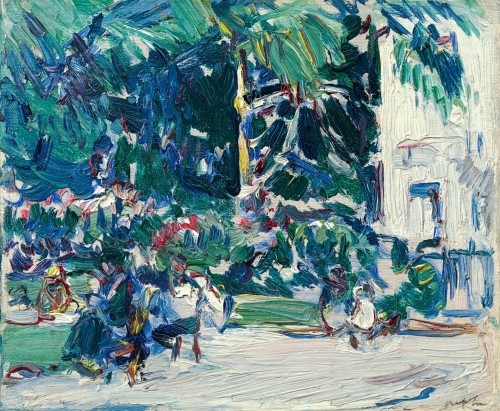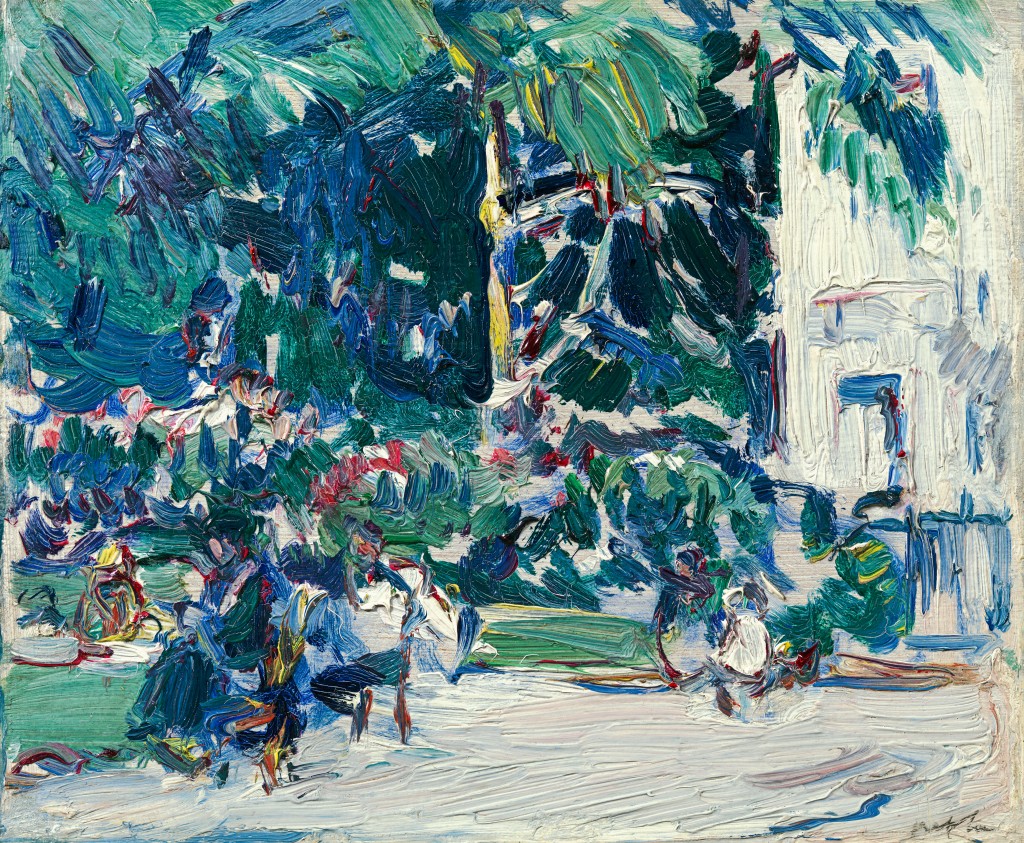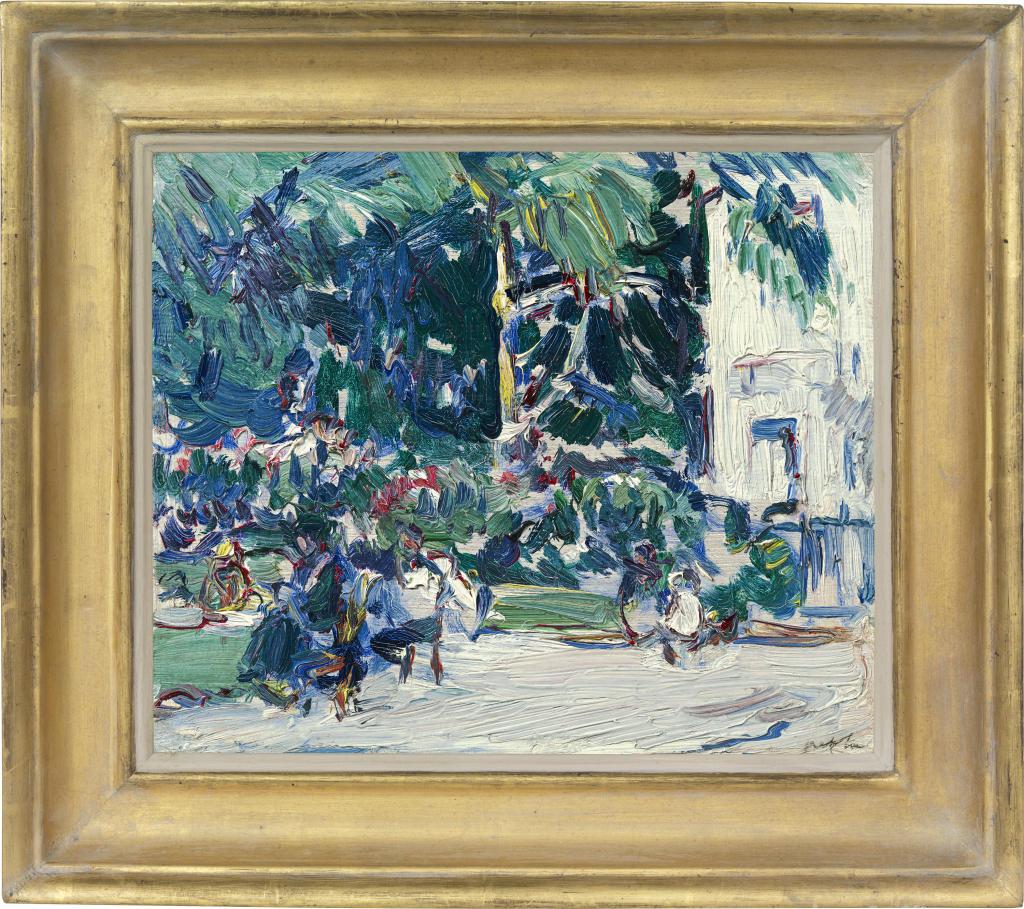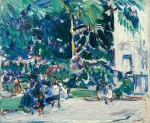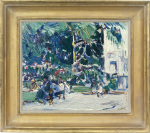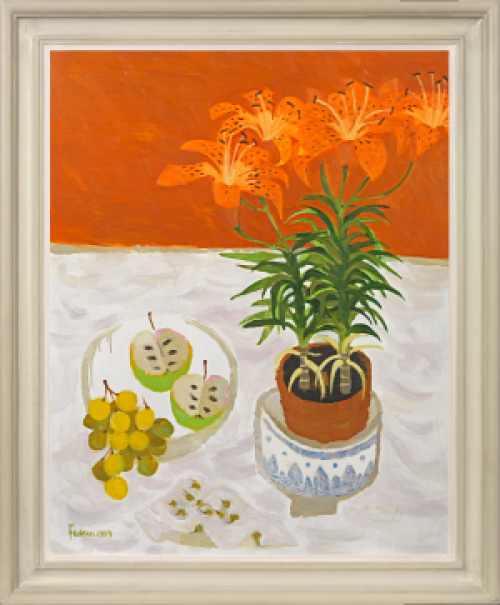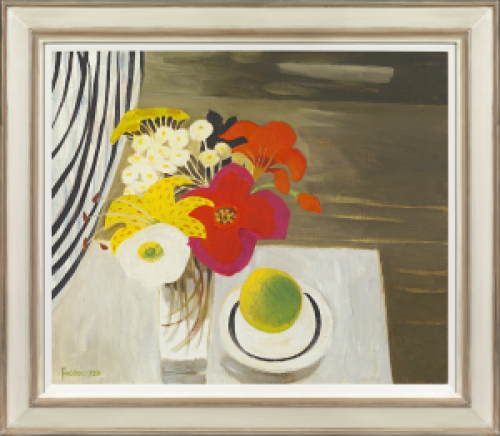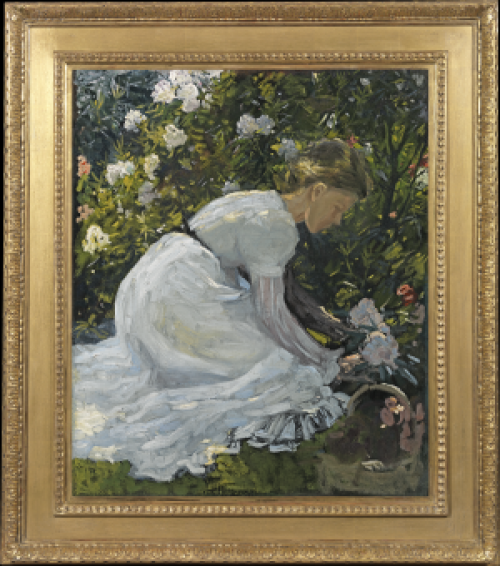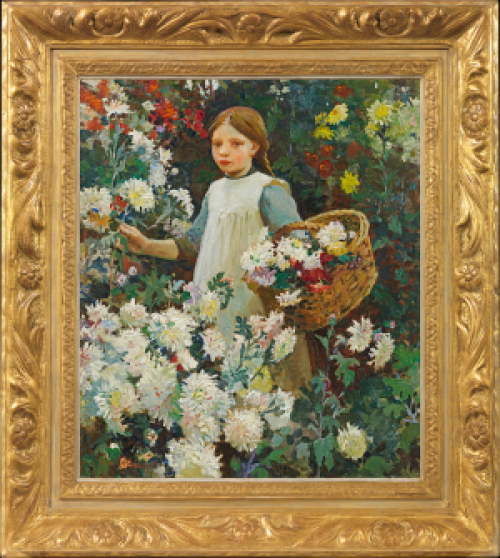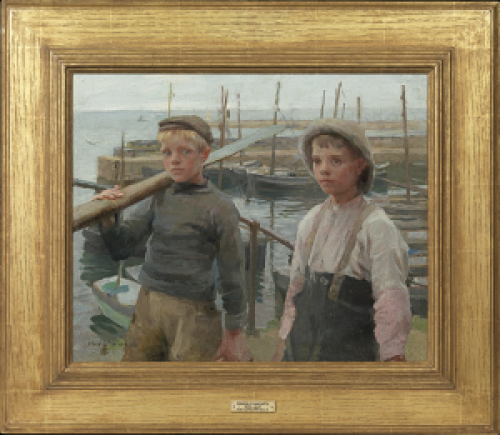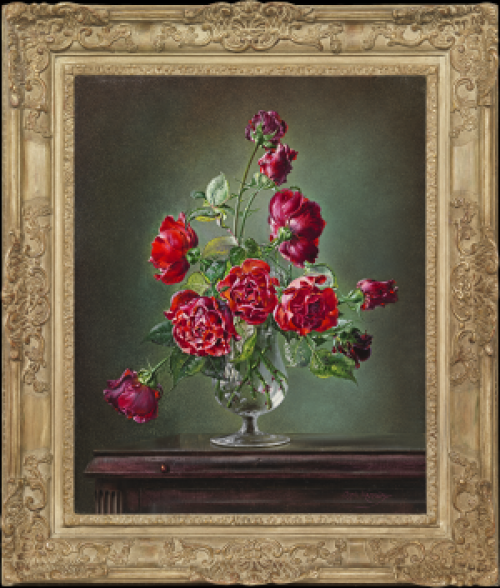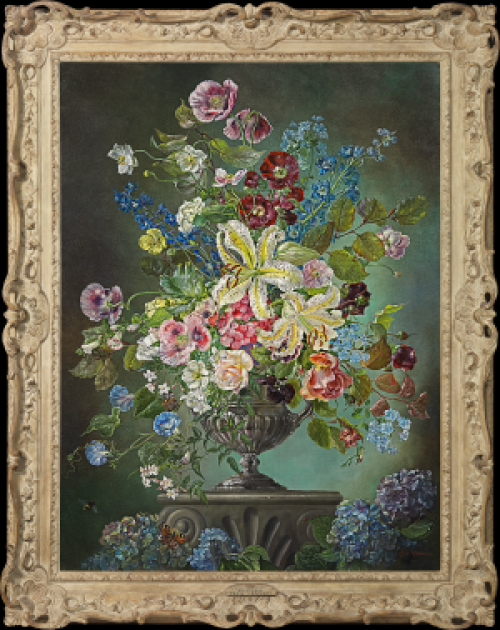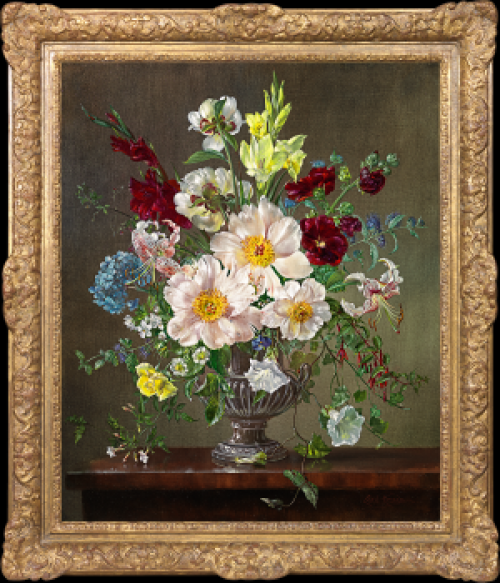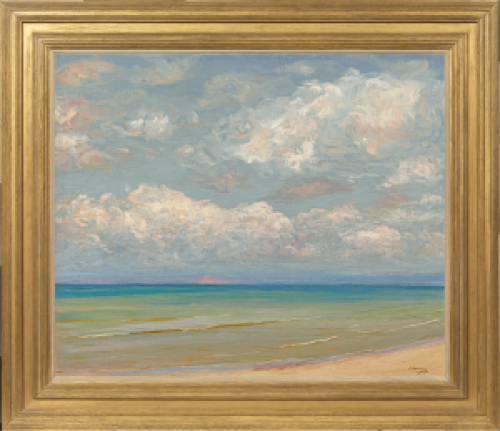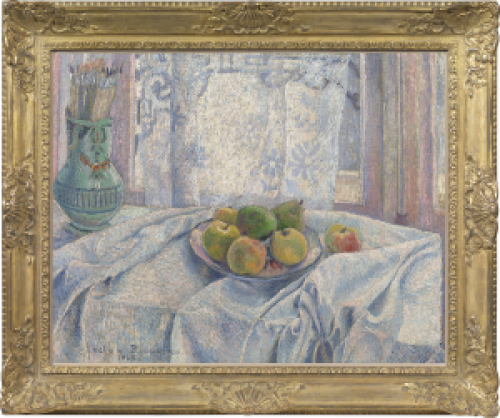SAMUEL JOHN PEPLOE RSA
1871 - Edinburgh - 1935
Ref: CB 185
The Luxembourg Gardens, Paris
Signed lower right: Peploe, inscribed on the reverse: Paris
Inscribed by the previous owner: Given to me by / Mrs Peploe / 3rd December 1935 / G Proudfoot
Oil on board: 8 ¾ x 10 ½ in / 22.2 x 26.7 cm
Frame size: 12 ½ x 14 ½ in / 31.8 x 36.8 cm
In a gilded hollow frame
Painted circa 1907-10
Provenance:
A gift from Margaret Mackay, the artist’s wife, to George Proudfoot, 3rd December 1935
Ewan Mundy Fine Art, Glasgow;
private collection
Fine Art Society, London;
private collection, acquired from the above in December 1992
Exhibited:
Glasgow, Ewan Mundy Fine Art, Autumn Exhibition: Paintings, Drawings and Etchings, September–October 1985, no.2, illus. in colour
London, Fine Art Society, Spring ’91, 7th May-7th June 1991, no.24, illus. in colour
Described as a ‘Franco-Scottish Painter’, SJ Peploe had a lasting love of France.[1] He studied in Paris, stayed for extended working holidays and lived in the capital for two years, during which he observed and completely engaged with modern French painting from Manet to Matisse. Peploe met fellow Scottish Colourist and Francophile, John Duncan Fergusson (1874-1961) around 1900 and from 1904 to 1910 they spent their summers painting together in France. Fergusson recalled that he and Peploe visited the newly opened Salle Caillebotte at the Musée du Luxembourg and were both very impressed with its extensive collection of Impressionist paintings.[2] In the exhibition catalogue for Peploe’s retrospective at the Scottish National Gallery of Modern Art, Frances Fowle writes: ‘Peploe firmly believed that France somehow unlocked the creative, expressive side of his temperament. Above all, he adored Paris, and one of the highlights of his career was in 1924 when one of his paintings was acquired by the French state for the Musée du Luxembourg.’[3]
This joyful oil sketch, painted en plein air at the Luxembourg Gardens, demonstrates Peploe’s enjoyment of painting outdoors in front of the motif and the immediacy of expression and fluid brushwork he shared with the Impressionists, while his bold palette and vigorous handling suggests his awareness of Van Gogh, Matisse and the Fauves. Fowle proposes Peploe’s masterful technique at this time was also influenced by Manet, Whistler and ‘the slick, alla prima (wet-on-wet) technique of John Singer Sargent (1856-1925), whom he probably met through Robert Brough. These various influences may account for the fluid handling and creamy quality of paint which are features of Peploe’s work up to around 1909.’[4]
Peploe created several brilliantly vibrant oil sketches of the Jardin du Luxembourg, including works in The Fleming Collection, the National Galleries of Scotland and Culzean Castle & Country Park (National Trust for Scotland). Peploe and his new wife Margaret Mackay moved from Edinburgh to Paris in 1910, where they rented and decorated a studio apartment at 278 Boulevard Raspail in Montparnasse, close to the Luxembourg Gardens. Surrounded by a community of artists, Paris seemed alive with possibilities and bursting with energy. As Fergusson recalled, ‘By this time I was settled in the movement. I had become a Sociétaire of the Salon d’Automne and felt at home. Peploe and I went everywhere together. I took him to see Picasso and he was very much impressed. We went to the Salon d’Automne dinner where we met Bourdelle, Friez, Pascin and others. He started to send to the Salon d’Automne. I was very happy for I felt that he was at last in a suitable milieu, something more sympathetic than the RSA. He was working hard and changed from blacks and greys to colour and design. We were together again, seeing things together instead of writing about them.’[5]
When he returned to Edinburgh in 1912, Peploe’s reputation was established as one of the most important living artists in Britain.
[1] Observer, 20th October 1935, cited in Guy Peploe, SJ Peploe 1871-1935, Mainstream Publishing, Edinburgh 2000, p.85.
[2] Frances Fowle, ‘Peploe in France: ‘A suitable milieu’’, SJ Peploe, exh. cat., National Galleries of Scotland, Edinburgh 2012, p.44. See Margaret Morris, The Art of JD Fergusson: A Biased Biography, Glasgow 1974 (2010 edition), p.42.
[3] Ibid., p.43.
[4] Ibid., pp.45-46.
[5] JD Fergusson, ‘Memories of Peploe’, The Scottish Art Review, Vol. VIII, No.3, 1962.

